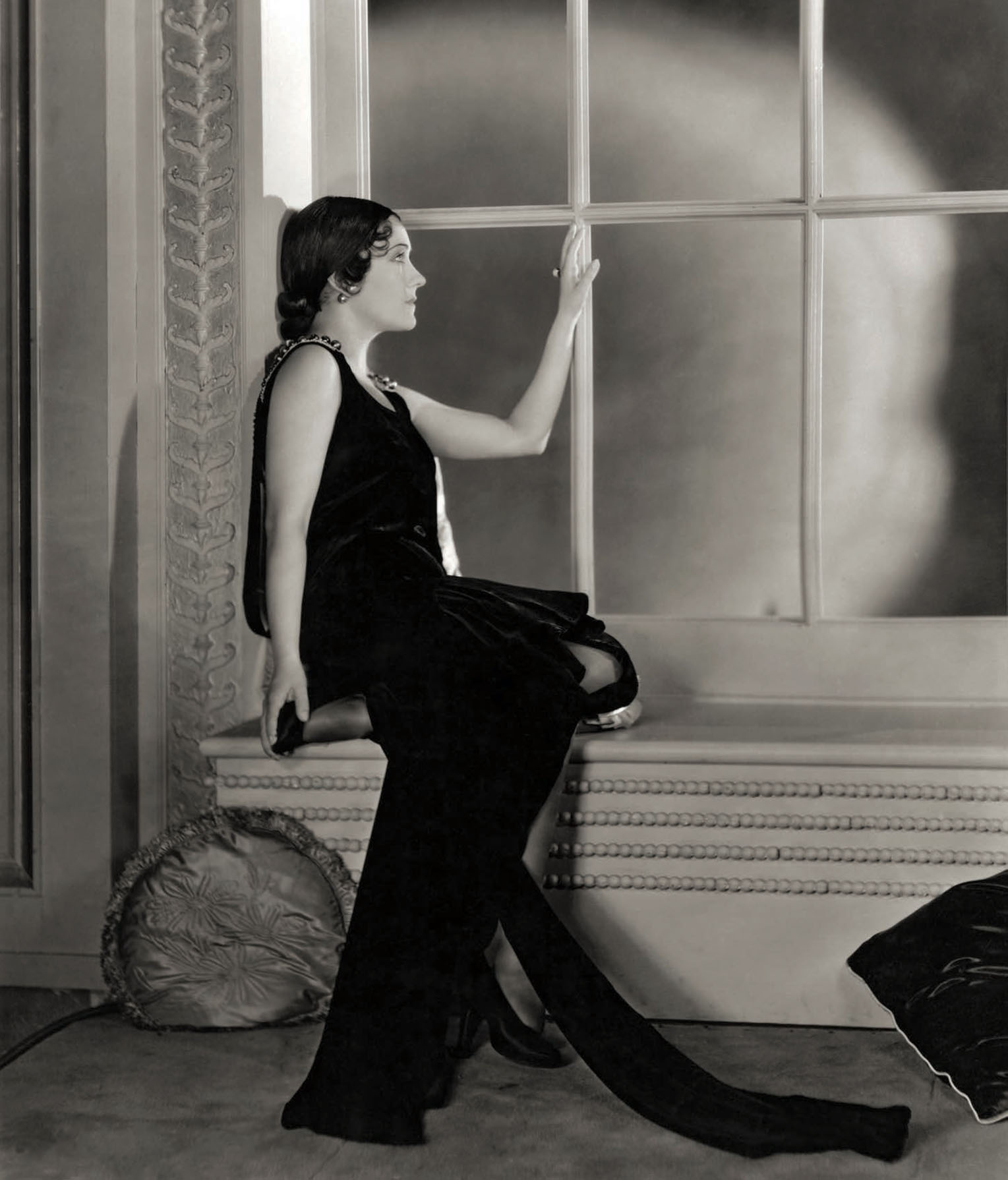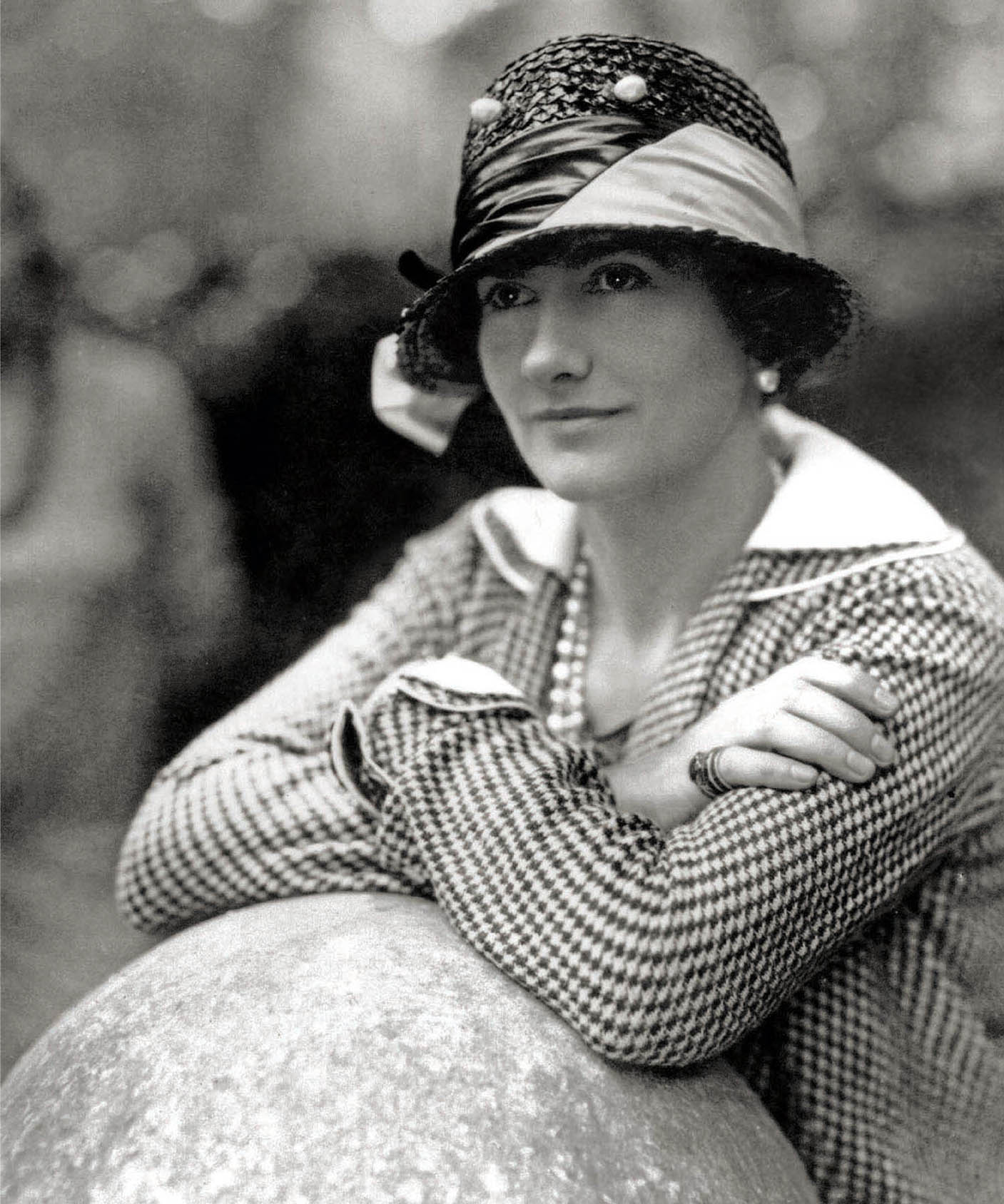Like his colleagues, producer Samuel Goldwyn spent the early months of the Great Depression wrestling with the problem of synching film production with the whim of Parisian couturiers, including the great Coco Chanel.
“Six months after women had ceased to wear short skirts, the screen showed our most famous stars wearing skirts to their knees,” Louella Parsons lamented in her column in 1931. “Where smart women of the world were wearing long, trailing frocks, the Hollywood stars were wearing extremely scanty skirts.” The solution to Goldwyn became clear. If a producer wanted to stay ahead of Parisian couture houses, then he needed to put a Parisian designer on his staff. In what he surely believed was a coup to be envied by all of his rivals, Goldwyn retained the greatest couturier of his time, Coco Chanel, to design for his productions. In announcing the $1 million deal to her readers, Parsons advised them, “For the latest fashions, study United Artists pictures.”
Chanel started life as Gabrielle Bonheur Chanel, the second daughter of Henri-Albert Chanel and Eugénie Jeanne Dévolles, born out of wedlock on November 17, 1884, in Saumur, France. The origin of her appellation, Coco, is anyone’s guess. At times, the designer claimed her father gave her the nickname. On others, she said it was short for “coquette,” the French term for a flirtatious woman. Popular gossip claims that the sobriquet had its origin in the fabulous cocaine parties Chanel allegedly threw for the Parisian elite. Though many aspects of Chanel’s life are disputed, historians agree that her mother was a laundry woman and her father was a street peddler. After their mother’s untimely death from tuberculosis, Chanel and her two sisters lived at a convent school, where Chanel learned to sew. After she turned eighteen, Chanel worked as a seamstress while pursuing a career as an entertainer. Her singing voice did not inspire admirers, but her beauty did. She was mistress to two men, textile heir Étienne Balsan and Captain Arthur Edward Capel, the latter of whom financed her first shops. Although Chanel initially focused on millinery, she expanded her lines to include sportswear, then haute couture. In 1922, she launched her iconic perfume, Chanel No. 5, retailed in department stores and shops. As her fame as a designer grew, her creations became popular first with the Parisian elite and then crossed the Channel to Great Britain’s aristocracy and royals. Beginning in 1924, Chanel also designed costumes for Sergei Diaghilev’s Russian Seasons in collaboration with Pablo Picasso.
By the time Goldwyn met Chanel in Monte Carlo in 1931, the Chanel brand was a thriving enterprise, employing thousands of workers. Goldwyn offered Chanel $1 million, a truly extraordinary sum in those days, to design for his production company. Under their agreement, each script for a new production would be sent to Chanel, who would design the clothes from Paris. A trip to Hollywood was planned for Chanel, and Goldwyn built a custom salon for her at the United Artists studio, which was “the last word in modernistic design and appointments,” one reporter noted.
Chanel arrived in Hollywood at the end of March 1931, by way of New York. The idea of a Parisian couturier designing for an American studio met with mixed responses in the press. A sense of nationalistic pride in American fashions had been on the rise, and some fashion editors were wary of being swayed by what Chanel dictated as chic. “The famous designer speaks no English,” the Pittsburgh Press reported, “but while walking around the studio grounds following close on her heels, we passed a young flapper whose hair had the appearance of being combed with an egg beater. And from Mlle. Chanel’s gestures, I gathered the startling news that bobbed hair was taboo.”
Chanel herself received a dressing down in the press. “Coco Chanel was Hollywood’s big disappointment when Sam Goldwyn brought her out here to design for his stars,” costume designer Maybelle Manning wrote. “She had just two evening gowns—a black satin, perfectly cut, and a white satin without a flaw in its smooth flowing lines.” Chanel wore them without jewels of any kind. And she wore them repeatedly. “Hollywoodites were put to it to locate her in a room because she was invariably the most simply gowned woman there,” Manning continued. “The Chanel turban of jersey, the Chanel tailleur, and the Chanel neutrality of color fairly blotted her out of this vivid scene. Especially since all the local ladies wore every diamond clip they possessed in her honor.”

Gloria Swanson in Tonight or Never (1931).
Chanel stayed in Hollywood for fifteen days learning about motion picture production and meeting Goldwyn’s production staff and the actresses for whom she would be designing. Chanel agreed to send the studio a complete collection of her seasonal fashion designs in linen at the same time she presented them in Paris. She also agreed to supply the studio with a Parisian staff experienced in converting her sketches and linen models into the finished clothes required for studio purposes. In early July 1931, Jane Courtois, Chanel’s head fitter, arrived in Hollywood with Chanel’s fall collection made of muslin and linen. From this collection, Goldwyn selected dresses for The Greeks Had a Word for Them (1932).
Next, Joe Schenck and Samuel Goldwyn bought the rights to Tonight or Never (1931), which had been a big hit for producer David Belasco on Broadway. Acquiring the film as a vehicle for Gloria Swanson, Schenck asked the actress to spend a month or two in Paris for fittings with Chanel while visiting Europe for the premiere of Indiscreet (1931). While Swanson was in Paris in August, she discovered a lump on her right breast. A doctor removed the tumor, which pathologists determined to be a milk cyst. The diagnosis meant she did not have cancer, but the cyst meant she was pregnant. Though she had married Michael Farmer earlier that month, her divorce from Henri de la Falaise had not yet become final, making the Farmer nuptials invalid. Swanson began to hatch a plan to hide her pregnancy, but she had to keep her fitting appointments with Chanel. When Swanson tried on a black satin floor-length dress for which she had been measured six weeks before, Chanel glared as the actress struggled to squeeze into the bias-cut gown unsuccessfully. Swanson tried the dress with a girdle, but the outline of the girdle showed through the form-fitting gown. “Take off the girdle and lose five pounds,” Chanel ordered Swanson. “You have no right to fluctuate in the middle of fittings.”
The next day, Swanson begged Chanel’s corset maker to sew surgical elastic into underwear. “Impossible!” the corset maker said. But with some persuading from Swanson, the corset maker stitched together experimental panties in muslin. They showed promise, so the final version in surgical elastic was made. Swanson had to be helped into the panties by three people, but they had the slimming effect she needed. “With the lavish confidence of Harry Houdini hearing twenty padlocks snap shut, I then raised my arms to receive the black satin cut on the bias over my head,” Swanson wrote in her autobiography. “It fit like a glove.” Swanson did not have to keep her pregnancy secret for long. She married Farmer a second time in November 1931 as soon as she returned to the United States. Their daughter Michelle arrived the following April.
When The Greeks Had a Word for Them was released, the press noted Chanel’s design presence in the film, but not in the way Goldwyn had hoped, despite his aggressive promotion with prerelease press materials. “All the costumes worn by Ina Claire, Joan Blondell, and Madge Evans were designed by Mlle. Gabrielle Chanel. The list of gowns includes fur coats, one of them costing $40,000, evening gowns, tailored suits, negligees, lounging pajamas, everything necessary to the pursuit of millionaires in which the three heroines indulge so skillfully,” a reviewer in the Reading Eagle wrote. Chanel’s clothes, while chic, were understated, certainly not the kind of flamboyant cinematic creations to which moviegoers had been accustomed. The ultimate disappointment for Goldwyn, though, was the failure of Chanel’s wardrobe to attract audiences to his films.
Ultimately, bad scripts accounted for most of the failure of the Goldwyn-Chanel films. They ended their association that year, and Chanel designed only for a few more films—all by French filmmakers.
In 1941, Maybelle Manning recalled the Goldwyn-Chanel collaboration as part failure and part success. The couturier “missed no scathing word” in panning Hollywood styles. “[She] snipped out a few chic, plain, and worldly clothes, waved ‘bon voyage,’ never, she hoped, to return again,” Manning wrote of Chanel’s departure from Tinseltown. “Hollywood laughed with bravado, sniffed gingerly at the simple styles of the great couturier, and would have returned to their gaudy ways . . . except they didn’t. The unrelenting criticism of Chanel had struck a note in their vanity-soaked souls. Like a good little mouse, every gal in Hollywood began to quietly change her type, to make a new woman of herself. To learn and know the ethics of fashionable dressing.”

Coco Chanel